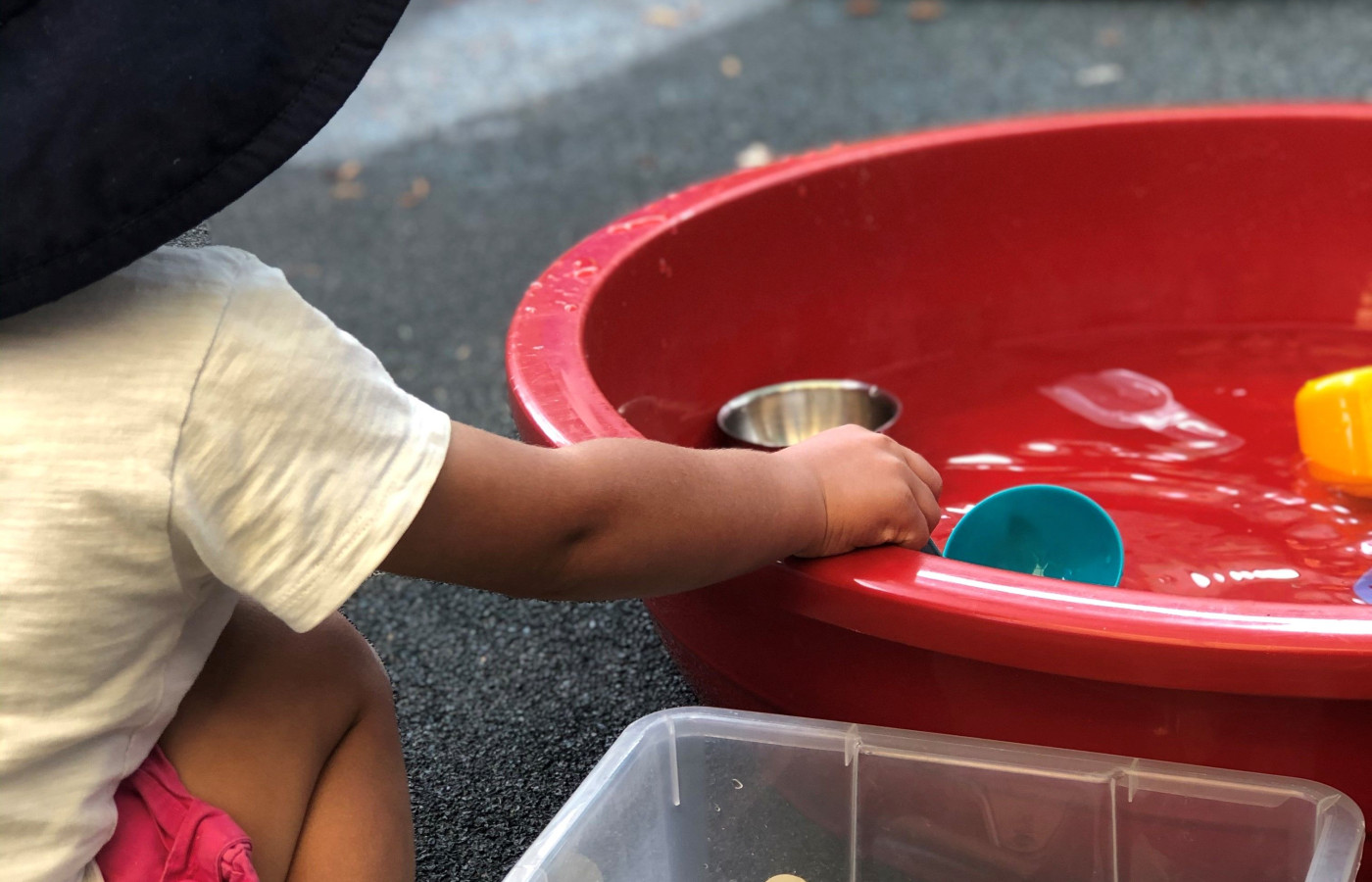Does it float or sink?

Does it float or sink?
Exploring the concept of floating and sinking using household items
Materials Required
- Large container with water
- Cup
- Objects you have in the home (e.g. metal spoon, wooden spoon/fork, nuts/bolts, Lego pieces, etc.)
- Natural materials like rocks, leaves, twigs and flowers are good for floating
- Bath toys that float
- Use whatever you have on hand and experiment
Fruit and vegetables (for older children to introduce the term density or explorations of mass)
Play experience profile
-
Age:
-
Min Playtime15 - 30 Minutes
-
Skills
-
Energy LevelQuiet Play
-
Messiness Rating
-
EYLF Outcomes
Play Experience Preparation
Collect all your floating and sinking items - Fill a large tub with water (you could do this at bath time if it works well for your household)Experience Steps
- This requires supervision at all times- children should never be left alone with water.
- Set the large tub of water up where you child can access this easily on a flat surface e.g. concrete path, table.
- Have the items in a tub next to the water.
- Ask your child to choose an item and predict (guess) if it will float or sink.
- Keep encouraging them to choose items and predict what will happen.
- After they have a few items in the tub ask them why they think each item floats or sinks.
- This requires them to form a hypothesis.
- Encourage them to try other items they can see - especially if they are outdoors.
- Record your predictions and findings on a piece of paper - you could create a graph.

What to talk about, or questions to ask during the experience
- Why do you think some of the items float and some of the items sink?
- What makes the rock sink?
- Why does the wooden spoon float but the metal spoon sink?
- What do you think the leaf will do? Float or sink? Why?
- Why does the plastic cup float and the glass cup sink?
Build on this...
- For older children you can introduce the concept of density by introducing fruit and vegetables into floating and sinking.
- Fruit and vegetables don't follow the heavy and light rule of floating and sinking because it has to do with the density of the item.
- See the link below for further ideas
WHO guidelines for physical activity and sedentary behaviour
Provide evidence-based public health recommendations for children, adolescents and adults on physical activity.
Learn more
Provide evidence-based public health recommendations for children, adolescents and adults on physical activity. Learn more
Walking to collect items is being physically active.
EYLF Outcomes
The Early Years Learning Framework has been designed for use by early childhood educators working in partnership with families, children’s first and most influential educators.
View PDF
The Early Years Learning Framework has been designed for use by early childhood educators working in partnership with families, children’s first and most influential educators. View PDF
- Children develop a range of skills and processes such as problem solving, inquiry, experimentation, hypothesising, researching and investigating
- Children develop dispositions for learning such as curiosity, cooperation, confidence, creativity, commitment, enthusiasm, persistence, imagination and reflexivity
- Children interact verbally and non-verbally with others for a range of purposes
EYLF Principle
Principle 3: High expectations and equity. Children progress well when they, their parents and educators hold high expectations for their achievement in learning.
EYLF Practice
Practice: Intentional teaching. Intentional teaching is deliberate, purposeful and thoughtful. They use strategies such as modelling and demonstrating, open questioning, speculating, explaining, engaging in shared thinking and problem solving to extend children’s thinking and learning.
https://theeducationhub.org.nz/edible-float-and-sink-experiment/
https://youtu.be/PAOCW6QWB0U watch the Discovery at Home video exploring floating and sinking with Discovery Space educators at Early Start, UOW
Author:


